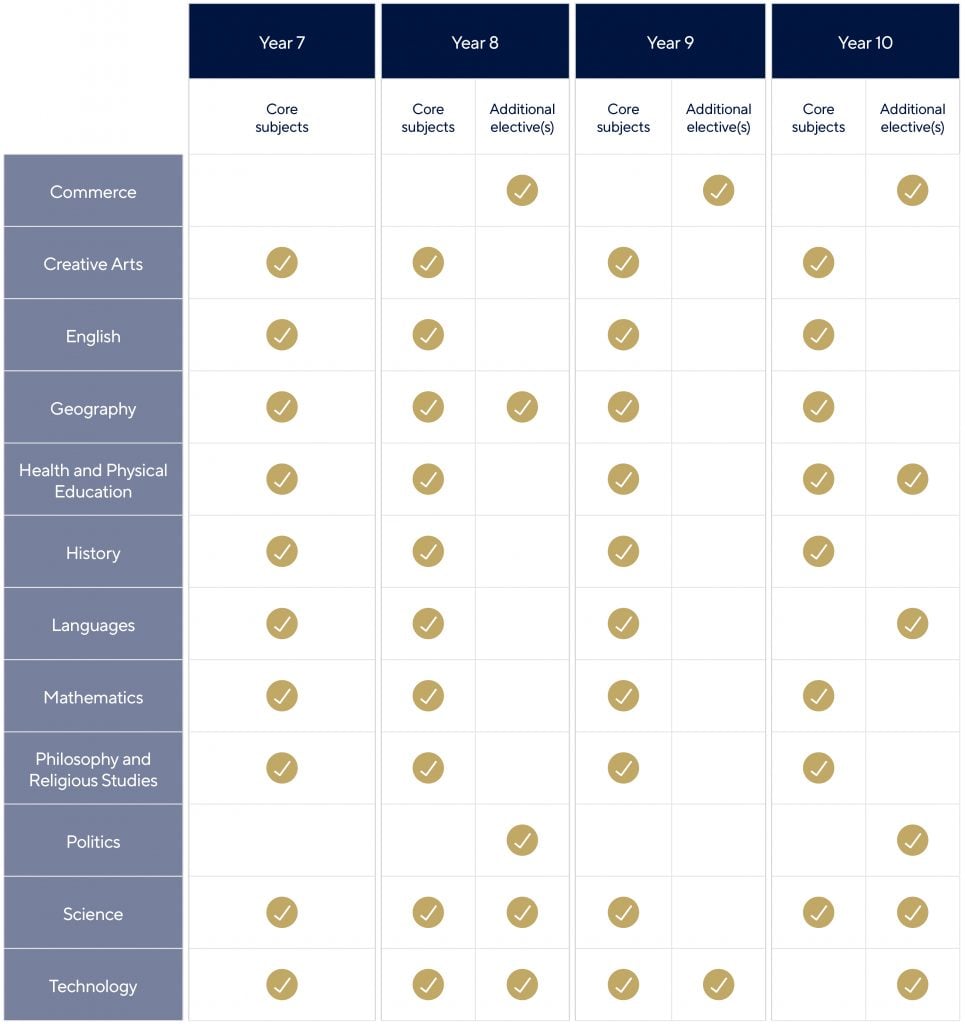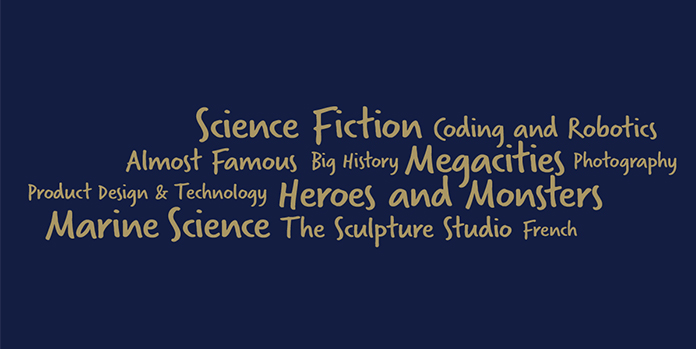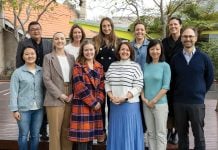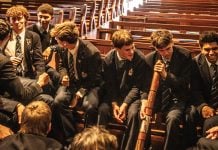At Melbourne Grammar School, our goal is to provide an exceptional, holistic education that prepares each student for the life ahead of them. With this goal in mind, we have introduced a refreshed Year 7–10 curriculum that offers a greater sense of continuity, as well as increased opportunities for students to develop their love of learning.
“We firmly believe in offering a broad liberal education at Melbourne Grammar, and this new curriculum provides that, along with more choice as students progress,” says Ben Hanisch, Deputy Headmaster and Head of Senior School. “It reflects our conviction that learning is intrinsically valuable, and that every subject area offers a perspective on how to think, and how to engage with the wider world.”
Increased continuity from middle to senior school
Essentially, all Year 7–10 students will study a range of core subjects including Mathematics, English, Science, History, Product Design and Technology and more. They’ll choose from a range of options in some disciplines such as Languages, the Creative Arts and Commerce. In addition, students will be able to select from a wide range of electives which are intended to both broaden the available discipline areas and widen the learning opportunities within disciplines.
“We know giving students agency is a big factor in terms of their engagement with learning, so, in addition to core subjects, we’ve created an elective-based curriculum that gives students increased autonomy as they progress,” Ben explains. “This not only gives them a greater sense of ownership over their education but also brings them into contact with different peers each semester, perhaps introducing them to fellow students who share their interests.”
Historically, Melbourne Grammar’s Wadhurst and Senior School campuses have operated independently, with a separate teaching staff at each. The refreshed curriculum creates a continuous journey from Year 7, when students are first gaining independence, through to Year 10, when they begin to move toward VCE study.
“Creating a learning pathway from Year 7–10 gives students more continuity not just in relation to content, but also in the way that it is delivered,” Ben adds. “With a synchronous 7–10 daily timetable it means teachers have more opportunities to move between Wadhurst and the Senior School. In 2025, we’ll see more than 35 staff teaching in both parts of the School, and many teaching new electives that reflect their specific area of interest and expertise.”
A new focus on wellbeing and critical thinking
Within the refreshed 7–10 curriculum, there has been a particular focus on updating two areas with the needs of today’s students front-of-mind: Health and Physical Education, and Philosophy and Religious Studies, both of which will be core subjects.
“We’re seeing a deeper understanding of and engagement with health and wellbeing in the wider world, and we want our Health and Physical Education classes to reflect that,” Ben explains. “Additionally, in an increasingly digital world shaped by artificial intelligence, it’s more important than ever that we create independent, critical thinkers. This is where Philosophy and Religious Studies has a particular role to play.”
Led by teachers who have specialist training in the area, Health and Physical Education classes will now address physical wellbeing along with aspects of mental health and healthy relationships.
In Philosophy and Religious Studies, students will explore big issues and develop their skills in logical thinking and ethical decision-making. This subject will be extended across Year 10, giving students a new opportunity to continue exploring ideas as they move towards their VCE years.
“The refreshed curriculum now offers a seamless journey,” says Ben. “We see this as another way to ensure each student has the support and choices they need to discover their strengths, and to reach new levels of achievement.”
Our Year 7–10 curriculum at a glance




